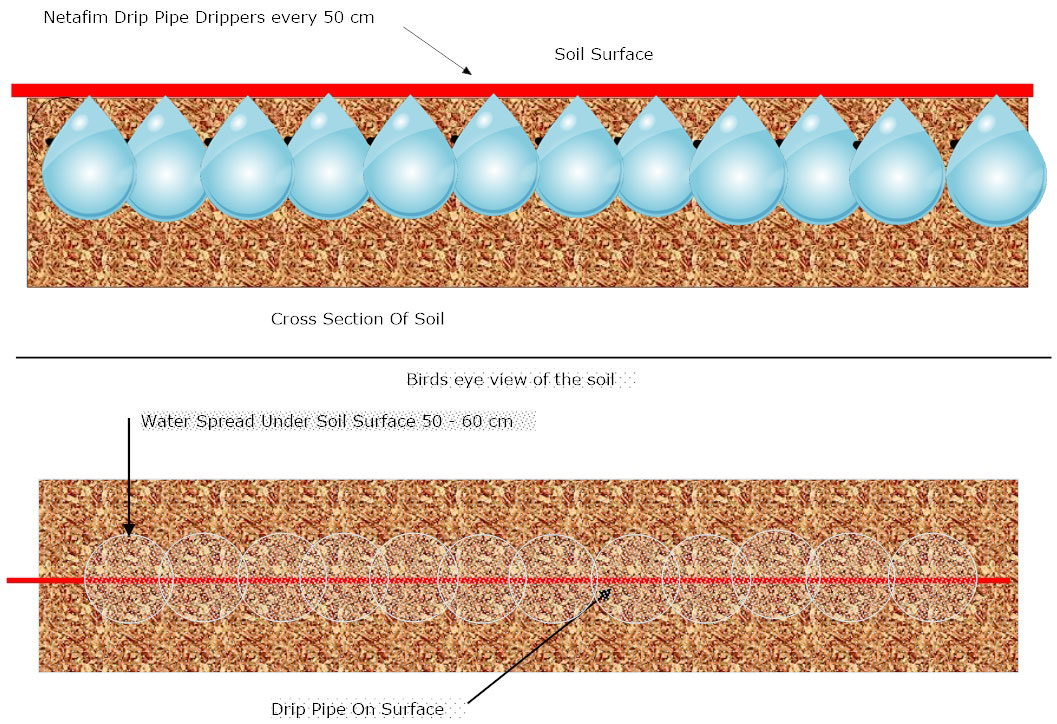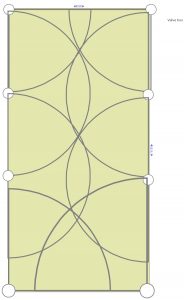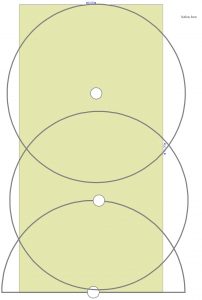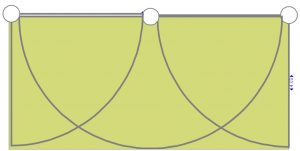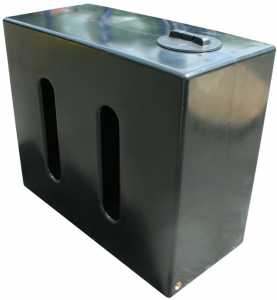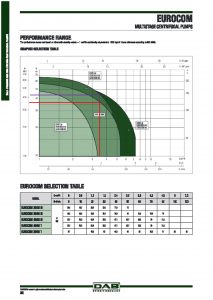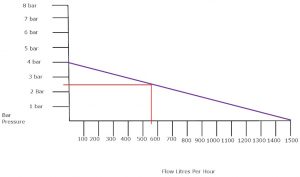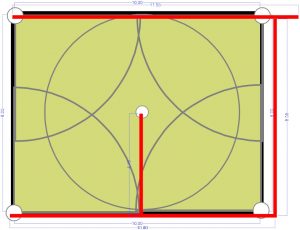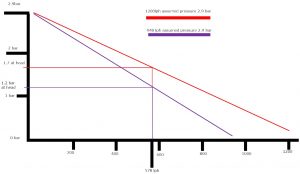Pressure Compensated Leaky Hose The Professionals Choice Of Drip Pipe
This is a pressure compensated leaky hose and offers a very even and reliable coverage compared to other makes of leaky hose. For more information concerning pressure compensated leaky hose please click the link below
If you would like to watch a brief video about Netafim please click here
Please click here to watch a brief video explaining how to use a push fit fitting
The diagram below should give you a visual ideal how drip pipe works
Pressure compensated drip pipe has a dripper inside the pipe at either 30 or 50 cm spacing. The drippers are pressure compensated which means that the same amount of water will drip from the first to last dripper ( 1.6 LPH) even if the pipe is running up or down hill. This is achieved using a filter. When water is dripped on to the soil water spreads between 50 and 60 cm in diameter. The surface stays quite dry however under the soil as per the side profile we can see the water spreading. Providing the drip pipe is operated for 30 minutes per day, every day the soil will stay damp and plant will thrive. On top of this because the soil surface is dry there is reduced germination of annual weeds and less evaporation that is associated with spray irrigation as much of the water is used to cool the soil. Added to this benefit the foliage and flowers of the plants do not become damage as the water is applied to the soil surface
Watering A Border Using A Header Pipe
Below is an example of how Netafim should be laid out so that wider borders can be watered. The example below would water the complete border 1.5 meters in width by the length of the pipe. So if we assume the border below is 10 meters in length then 30 meters will water 15 square meters
Use drip irrigation every day for 30 minutes
Drip irrigation should be used for 30 minutes every day. The reason is because the soil is being used like a sponge. If you take a dry sponge and pop it under running water you will see that most of the water runs off. Now get the same sponge soak it with water and ring it out. Pop the sponge back under the flowing water and you will see that most of the water is absorbed by the sponge
Although it may seem very satisfying to water by hand, if you dig into the soil when you’re finished you will find only the top inch or so is wet. Most of us don’t have the patience or time to water properly by hand. Giving a 20×3-foot vegetable bed the inch or more of water it needs during the heat of summer would leave you holding the hose for almost a half an hour (assuming your hose can deliver 2 gallons per minute). Even if you had the patience required, the water flows so fast, much of it runs off along the soil’s surface rather than sinking in.
Using a sprinkler also has several disadvantages compared to drip irrigation. Sprinkling increases the spread of plant diseases, especially if you water in the evening when leaves have less chance to dry off quickly. Sprinkler irrigation also uses more water than drip irrigation, wastes water on weeds in the rows and creates muddy paths. Your best bet is drip irrigation. —Steve Reiners, Ph.D., associate professor of horticultural sciences, Cornell University.


